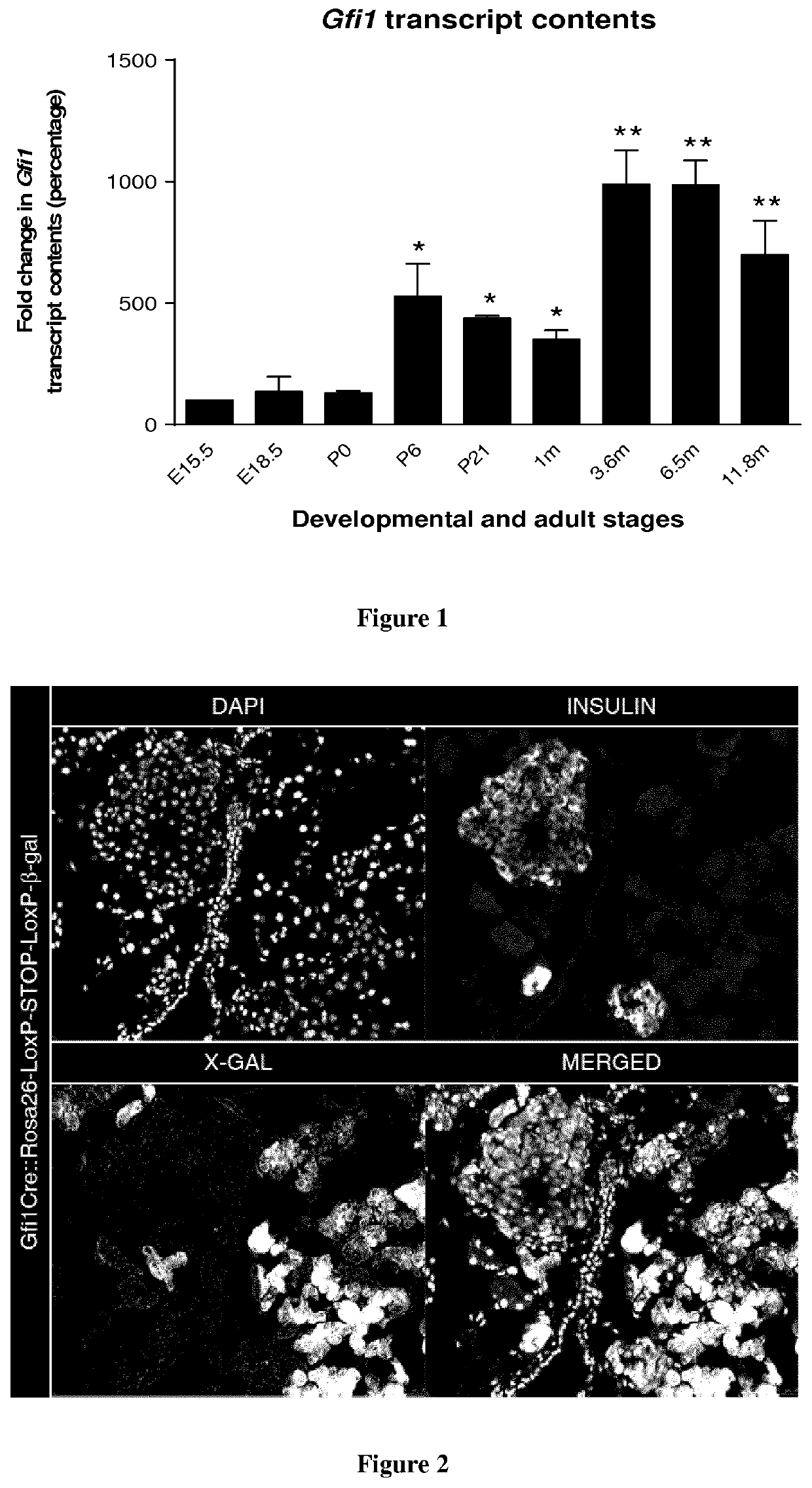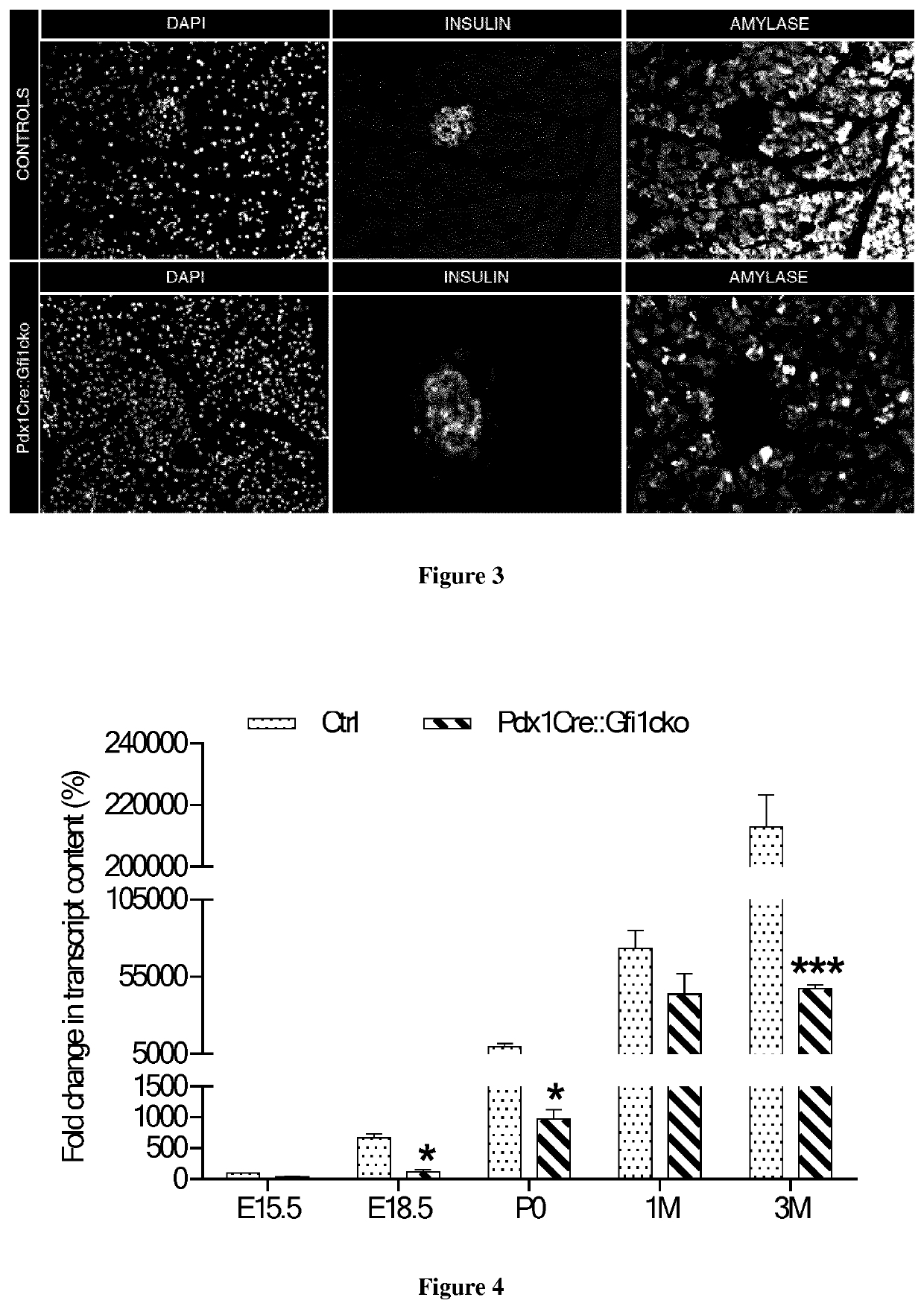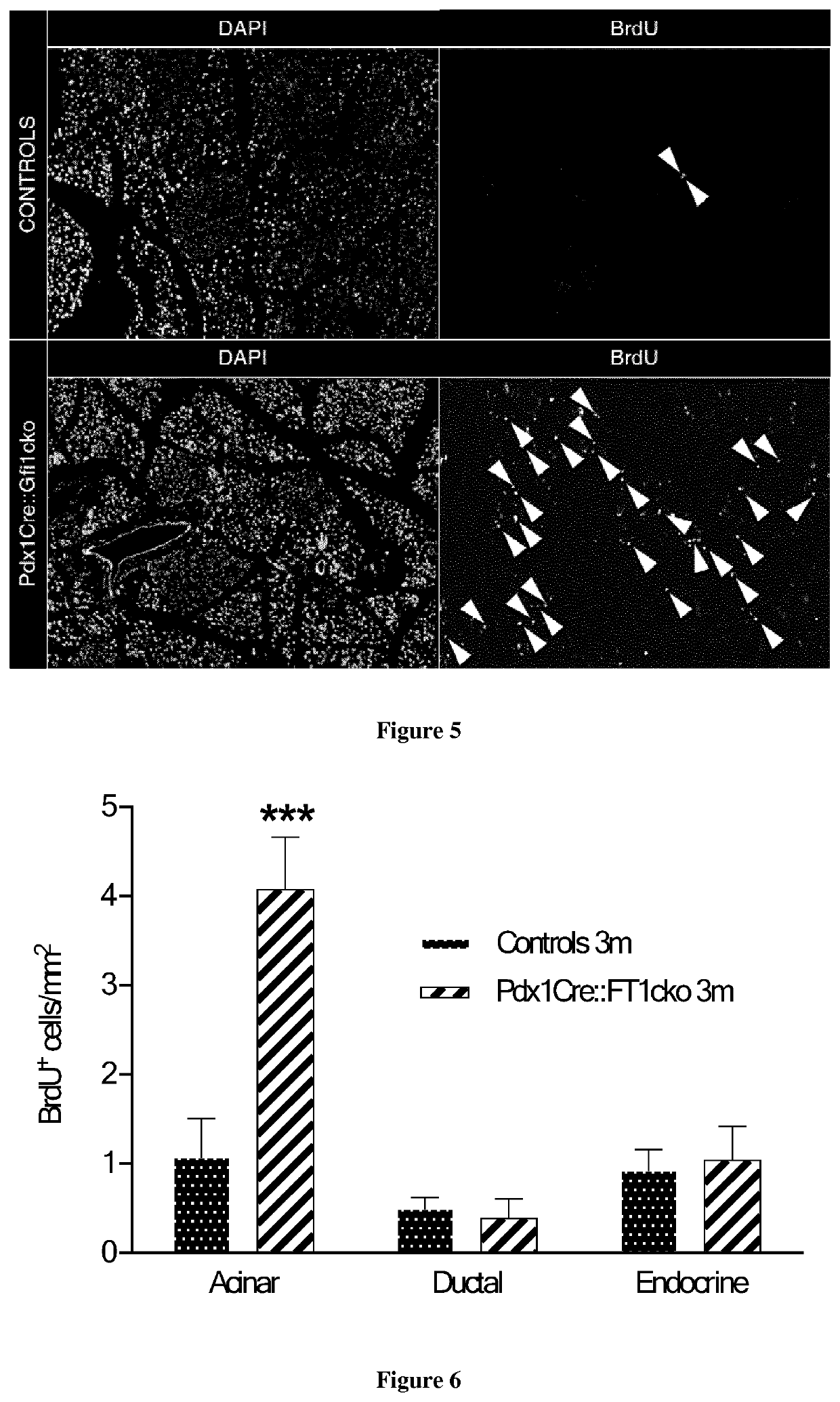GFI1 inhibitors for the treatment of hyperglycemia
a hyperglycemia and inhibitory technology, applied in the field of gfi1 inhibitors for the treatment of hyperglycemia, can solve the problems of all factors, understand the regulatory network underlying pancreas formation, and achieve the effect of improving the effect of glycemia
- Summary
- Abstract
- Description
- Claims
- Application Information
AI Technical Summary
Benefits of technology
Problems solved by technology
Method used
Image
Examples
example
[0040]Through a thorough quantitative analysis using qRT-PCR, we demonstrated that Gfi1 is expressed in the pancreas, starting from the first stages of pancreatic embryonic development. Furthermore, we observed that Gfi1 mRNA levels remain steady throughout embryonic development, while they significantly increase during the first days of life (from Postnatal day 6). A further increase was also noted between 1 and 3 months of age. Afterwards Gfi1 expression appeared to be stable during adulthood until at least 12 months of life (FIG. 1). To investigate Gfi1 expression pattern, a Gfi1-Cre mouse line (expressing the phage P1 Cre Recombinase under the control of the endogenous Gfi1 promoter) was crossed with a ROSA26-β-gal mouse line (harboring a transgene containing the Rosa26 promoter upstream of a loxP-Neomycin resistance-Stop-loxP-β-galactosidase cassette). In the resulting Gfi1Cre::RosaLac animals, cells are permanently labelled once Gfi1 expression is activated. Thus, the spatiote...
PUM
| Property | Measurement | Unit |
|---|---|---|
| mass | aaaaa | aaaaa |
| concentrations | aaaaa | aaaaa |
| resistance | aaaaa | aaaaa |
Abstract
Description
Claims
Application Information
 Login to View More
Login to View More - R&D
- Intellectual Property
- Life Sciences
- Materials
- Tech Scout
- Unparalleled Data Quality
- Higher Quality Content
- 60% Fewer Hallucinations
Browse by: Latest US Patents, China's latest patents, Technical Efficacy Thesaurus, Application Domain, Technology Topic, Popular Technical Reports.
© 2025 PatSnap. All rights reserved.Legal|Privacy policy|Modern Slavery Act Transparency Statement|Sitemap|About US| Contact US: help@patsnap.com



